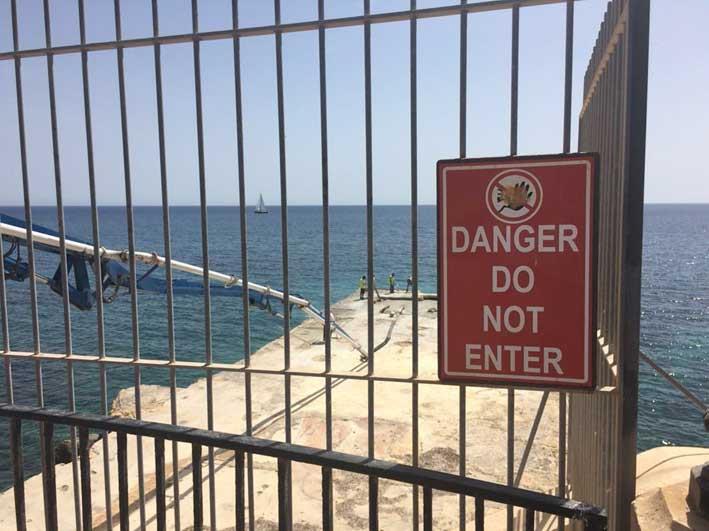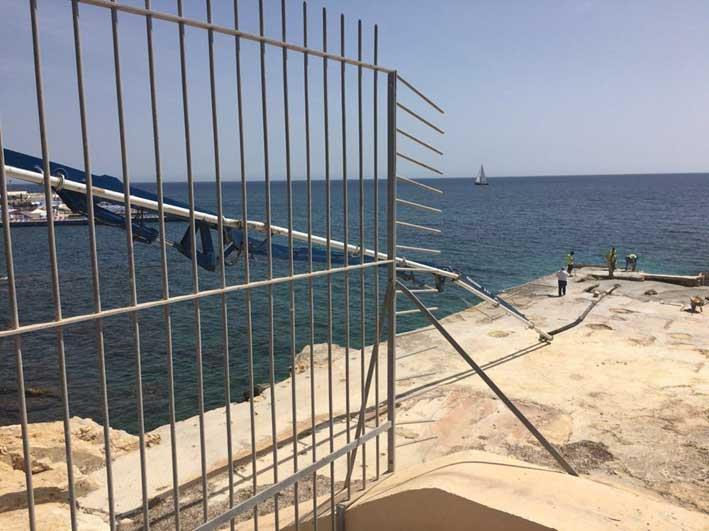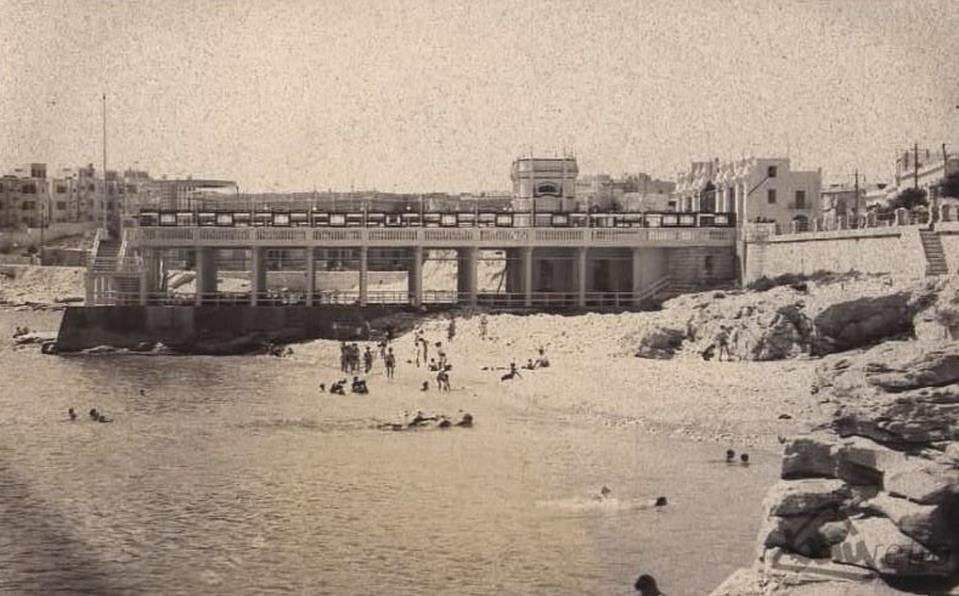Damage sustained by the legendary Sliema Chalet in the early 2015 winter months is being repaired just in time for summer 2016. Repairs are expected to be finished by early next week.
In comments to The Malta Independent, Sliema mayor Anthony Chircop explained the extent of the damage to the existing pier, which was used by swimmers and fishermen primarily during the summer months. A storm in 2015 had turned a small amount of damage to the base structure into a gaping hole making the entire structure unsafe.

As such, the flat concrete platform, which is all that was left of the Chalet after the entire derelict structure was pulled down in 2006, was closed to the public ever since the storm. The Mayor explained that the local council reached out to the Ministry of Transport and Infrastructure to help fix the damage cause but due to budgeting issues, this was put on hold for a year.
This newsroom asked whether there were any plans for further development in the area, but Mr Chircop replied in the negative saying that “They will render it as it was before as just a platform; nothing in particular, just a flat surface by the sea.” The priority of all concerned is to make the platform, used and loved by a large number of people, safe again.

(Photos above Lee Fardoe)
The history of the Chalet
The area of Ghar id-Dud in Sliema was popular ever since the end of the 19th century when the esplanade was cemented and modern seating was put there in place of the stone benches that were there before. Eventually local and military bands used to perform for the public and a bandstand was also built at the Qui-si-sana end to serve as a stage.
There was a call for tenders by the government on 9 November 1923 for the construction of a Chalet, which needless to say, turned into a much-loved venue for people of all ages and all walks of life from 12 May 1926.
It became a place where the island’s most popular musical acts and a number of distinguished guests would go and mingle and have a good time. There were even dancing competitions held every Thursday with music being played on both the top and bottom floors at the weekends.
Since it was illegal at the time for young people to see adults dancing, there were windows on the top floor which would be shut when the guests were allowed to dance. Sunday evenings saw a band playing on the bottom floor but tables and chairs were laid out because dancing was not allowed.

The Chalet stopped being frequented in 1939 due to WWII an in March 1942, the structure was hit during an air raid. It was officially reopened after being fully repaired in 1944.
1959 saw the Chalet being officially declared structurally unsound and it was permanently closed Down in 1963.
24 April 2006 marks the date when the Chalet structure was pulled down leaving only the platform which is being repaired right now as a remnant of the once innovative place-to-be.